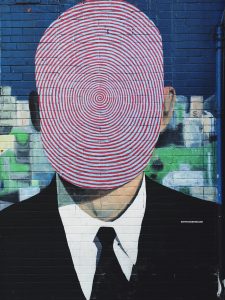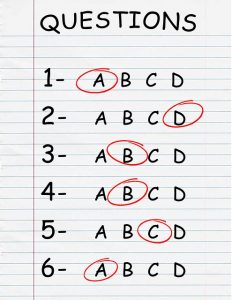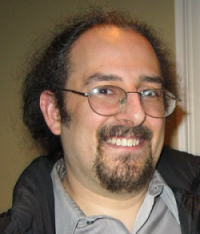Today I want to talk a little about our hiring process. Although Tricky Fast is a full-service studio (engineering, design, art, audio and production,) today I am going to focus on hiring engineers. Along the way, I will point out some of the qualities we look for to find that perfect fit. Hopefully, this will be useful for hiring managers, potential candidates interested in Tricky Fast, or even potential clients who have an interest.
Where are they?
Finding a decent pool of qualified candidates is the first challenge. For every role I need to fill, I need three to five qualified candidates. Minimum. On top of the usual hurdles of finding new hires, Tricky Fast fills a lot of contract positions. This inherently limits our pool and can bring about a certain amount of time pressure.
Sites like Indeed give you a gigantic yield. Of crap. You can sift said crap and I do. But suffice to say, you will find an astonishing amount of people who ignore anything in your job req. Out of twenty responses, I might get three potential candidates.
Most of our success stories have come via forums, personal connections and most recently Unity Connect. Posting on or answering posts on forums which pertain to the skillset you are targeting, can produce great yields. Additionally, someone who jumps out as being particularly skilled via the problems they have helped to solve is worth reaching out to directly. Forums also tend to be a pretty good way to find contractors.
Personal connections include the friend of a dev on your team or former coworker, someone you met at a convention or meet up, and even social media connections. Personal connections are always worth following up on. A lot of the discomfort, on both sides, of the interview process is shed when there is some sort of personal connection.
Unity Connect is a decent way to find candidates if you are specifically looking for Unity work. The only caution here is to look for experience outside of Unity. At least for our needs, we find that candidates who only have experience in Unity tend to be a bit limited when it comes to solving bigger problems. Of course, in a more junior role you might look past this, but you would still want to see at least education outside of Unity.
Hello!
 It all begins with the resume. Whether I reach out or they respond to an ad, I always want to see a resume. I make this clear in my requirements and providing one is the first and simplest test to pass. I am amazed at the amount of people fail this test. On a resume, I am looking to verify job requirements are met by the candidate. They have the skills I am looking for and the practical experience needed.
It all begins with the resume. Whether I reach out or they respond to an ad, I always want to see a resume. I make this clear in my requirements and providing one is the first and simplest test to pass. I am amazed at the amount of people fail this test. On a resume, I am looking to verify job requirements are met by the candidate. They have the skills I am looking for and the practical experience needed.
If the candidate looks worth talking to, I will look to set up an interview ASAP. We move fast when we find a potential candidate.
Who are they and what can they do?
 Generally, I will setup the first call between myself and the candidate. This is the phone screen. In the phone screen, I am looking to verify skillsets, vet the personality fit, let them know a bit about Tricky Fast and the potential project, and collect details like availability. We need people who are good communicators, being remote and a contractor requires diligent communication. We also require a bit more self-sufficiency than you may with a regular hire. Our junior and mid engineers need to be closer to senior level, in that regard.
Generally, I will setup the first call between myself and the candidate. This is the phone screen. In the phone screen, I am looking to verify skillsets, vet the personality fit, let them know a bit about Tricky Fast and the potential project, and collect details like availability. We need people who are good communicators, being remote and a contractor requires diligent communication. We also require a bit more self-sufficiency than you may with a regular hire. Our junior and mid engineers need to be closer to senior level, in that regard.
Usually I like to hear the verbal story of their resume. This opens avenues of actual conversation, exposes unknown skills, and helps to verify knowledge and experience. Assuming all goes well, I like to hand off the candidate to Mike Handverger, our president and technical leader, alerting him to any areas I think should be covered more.
Mike will further delve into the questions of personal fit and get into a deeper technical vetting. Mike focuses on questions that determine if the candidate has a solid foundation of programming knowledge. Often times, this is more important than knowing the intricacies of a specific technology. This line of questioning will help inform the next interview(s), in terms of areas to push on and further evaluate.
After that we always do one, if not two, more interviews. The goal of subsequent interviews is to further verify the personal fit and to push on problem areas from earlier interviews. After the final interview(s) we will gather notes and a vote on the candidate. We try to adhere to the policy that if anyone is a solid “no” on the candidate, then we pass.
Can they really?
 Beyond the interviews, we often like to administer a test. Something on the smaller side, which exposes how the engineer approaches real code. I am not going to get too into tests, because you likely already know about the usefulness of tests in hiring. Our preference though, is to start with a smaller internal project, before setting the new hire loose on a client’s project. This probably is not a great strategy in a traditional studio. People who are looking for salaried positions are not likely to take the risk on a short term contract. But for an outsourcing studio like Tricky Fast, this is not an unexpected or unique situation. Being able to really get to see how someone works, before exposing them to a client, is fantastic.
Beyond the interviews, we often like to administer a test. Something on the smaller side, which exposes how the engineer approaches real code. I am not going to get too into tests, because you likely already know about the usefulness of tests in hiring. Our preference though, is to start with a smaller internal project, before setting the new hire loose on a client’s project. This probably is not a great strategy in a traditional studio. People who are looking for salaried positions are not likely to take the risk on a short term contract. But for an outsourcing studio like Tricky Fast, this is not an unexpected or unique situation. Being able to really get to see how someone works, before exposing them to a client, is fantastic.
Welcome to the team!
 Beyond the strict requirements of a particular project, Tricky Fast has it’s own set of requirements. The steps above have led us to some fantastic hires.
Beyond the strict requirements of a particular project, Tricky Fast has it’s own set of requirements. The steps above have led us to some fantastic hires.






